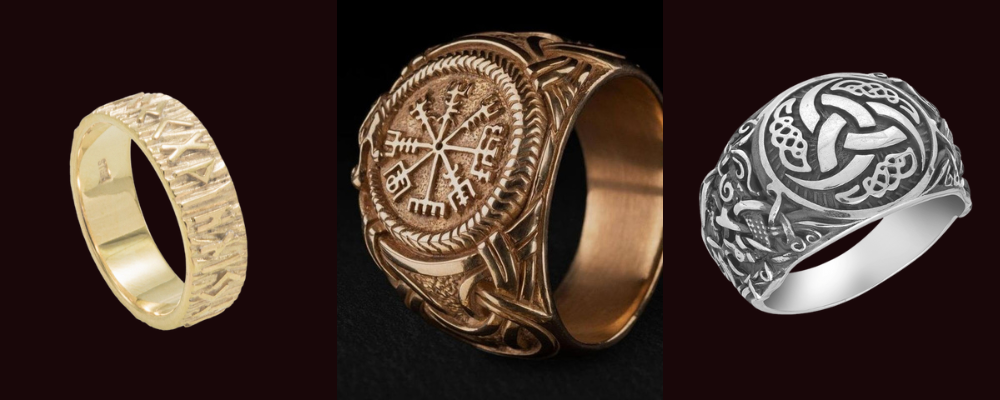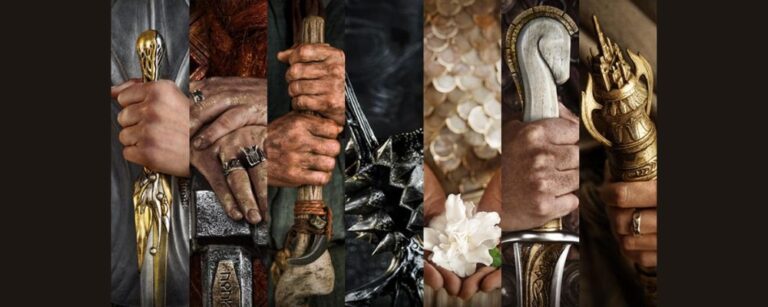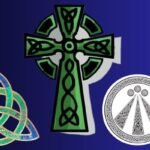We are very excited about the release of the new The Lord of the Rings: The Rings of Power series. The first episode dropped on Amazon Prime on September 1 (2022).
It is set thousands of years before the events of The Hobbit and The Lord of the Rings in the Second Age described in the appendices of LOTR. It tells the story of the forging of the rings of power and the rise of Sauron but from the perspective of the long-lived Elves rather than the peace-loving Hobbits.
But why are we talking about LOTR on a blog dedicated to Vikings and Norse mythology? Did you know that J.R.R. Tolkien and his works were heavily inspired by Norse mythology? Let’s look at the Norse mythological influences in LOTR.
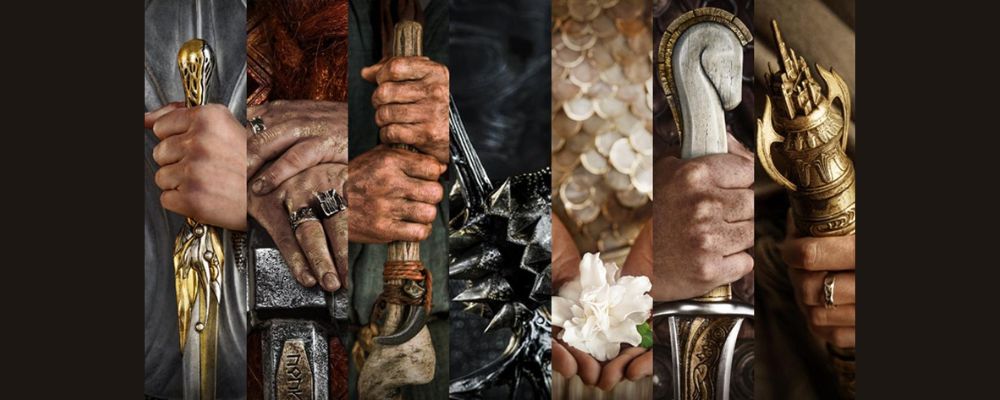
Tolkien’s Interest in Norse Mythology
Tolkien was a great fan of Norse mythology from his school days and continued to pursue his passion when he became a professor of English literature. One of his areas of expertise was the Old English poem Beowulf, which tells the story of a 6th-century Danish hero.
As well as being a founding member of the Inklings, a group of fantasy authors that met in Oxford that also included C.S. Lewis, Tolkien was also a founding member of the Viking Club in the 1920s, which met to discuss extinct Germanic languages and culture.Tolkien also wrote his own version of the Legend of Sigurd and Gudrin, which contains the story of the cursed ring Andvaranaut, revealing that this story must have had some influence on Tolkien’s creation of the epic surrounding the One Ring.
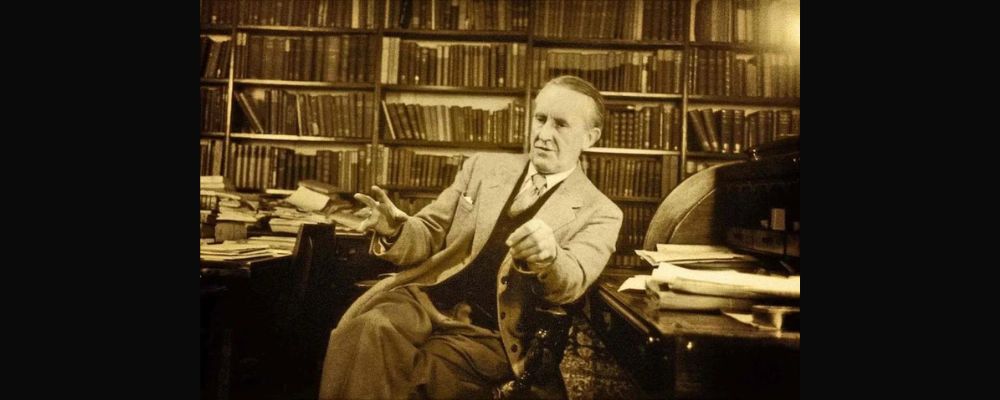
Midgard and Middle Earth: Norse Cosmology in Tolkien’s Universe
Tolkien created a complex and coherent setting for his stories, and several elements of the LOTR universe were based on ideas from Norse mythology.
In Norse mythology, men live in Midgard, the middle realm, and Tolkien’s characters live in Middle Earth. The gods, the Valar, live in Valinor, which can be equated with Asgard. It is separated from Middle Earth by a long straight bridge. This represents the Rainbow Bifrost Bridge between Asgard and Midgard.
There are many small details in the LOTR settings that also nod towards Norse mythology. For example, the Golden Hall of the Kings of Ronan is called Meduseld, which means “mead hall”. It is clearly based on the great mead hall, Heorot, that Beowulf occupies. It has a roof of straw that gleams like gold, and when Legolas describes it, he uses a direct quote from Beowulf: “the light of it shines far over the land.”
When the fellowship arrives at the hall, they are challenged by the guard and told that they must leave their weapons outside. When the heroes of Beowulf arrive at Heorot, they are also challenged by the guard and forced to pile their weapons up at the door.

Men, Elves, and Wizards: The People of Middle Earth
Many of the peoples of Middle Earth are based on the beings mentioned in Norse mythology. Trolls are very common in Scandinavian stories and are very similar to the ones that we meet in The Hobbit.
Elves
The Elves are another example, described in Norse mythology as beings of light akin to the gods. They are divided into two different groups, Light Elves and Dark Elves. Tolkien’s world also has different types of elves: the Calaquendi are the elves who have seen the light of the two trees of Valinor, while the Dark Elves are those that did not.
Dwarves
But the Dark Elves of Norse mythology are more akin to the Dwarves of LOTR. The Dark Elves live in a dark underground world where they work as master blacksmiths. They are covetous of great wealth to make their creations. A pair of dwarves killed Kvasir, the smartest man who ever lived, and used his blood to create the Mead of Poetry.
Tolkien’s dwarves are also master blacksmiths and covetous of riches. Their hoard of gold in the Lonely Mountain is what attracted the attention of the dragon Smaug. While the language that Tolkien created for the Elves is based on Latin, his language of the dwarves is based on the Old Norse runes.
The dwarves that we meet in The Hobbit are all named after dwarves listed in the Voluspa Saga.

Hobbits
Frodo’s name seems to have been taken for the Ynglinga Saga, a mythical prehistory of Scandinavia. It describes a Danish king Frodi, descendant from Odin, who rules over a period of peace and prosperity during which no one would steal a ring. This seems an appropriate name for one of the few characters that can resist the deep temptation posed by the power of the One Ring.
Dragons
The dragon Smaug is also very similar to the dragons that appear in various Norse tales. They are ferocious and long-lived, tend only to fly at night, and are covetous of riches that they keep in grand hoards.
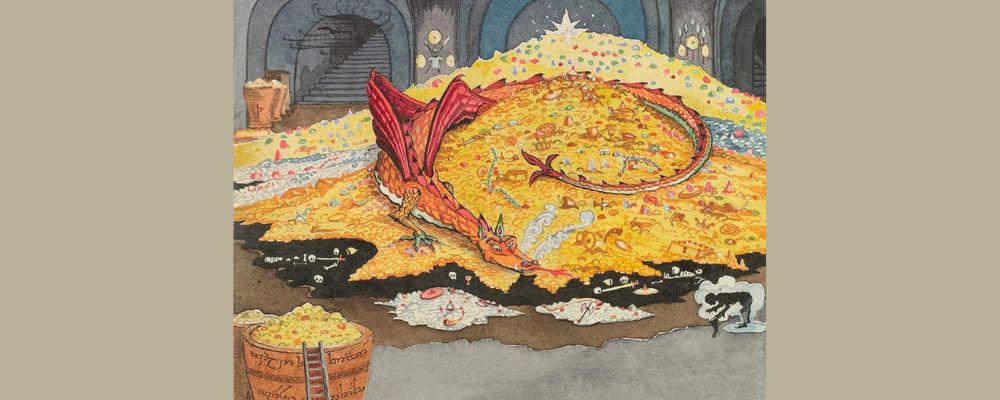
Gandalf
Gandalf is also named after one of the dwarves in the Voluspa Saga. But in a 1946 letter Tolkien specifically stated that he imagined Gandalf as an Odinic Wanderer. Odin, the principal god in Norse mythology, was known to leave his seat in Asgard and wander the world of men looking like an old man with a great beard and a brimmed hat. Like Odin, Gandalf is a sorcerer and tends to make helpful trouble wherever he goes.
Gandalf is also one of the Valar, which are a god-like race that live in Valinor, Tolkien’s equivalent of Asgard.
The Balrog, that Gandalf confronts in Moria, is based on Surtr, a great fire giant that is destined to burn much of the world at Ragnarok. The collapse of the bridge in Moria that sees the two fall into the center of the Earth is a reference to the collapse of the Rainbow Bifrost Bridge between Asgard and Midgard at Ragnarok.
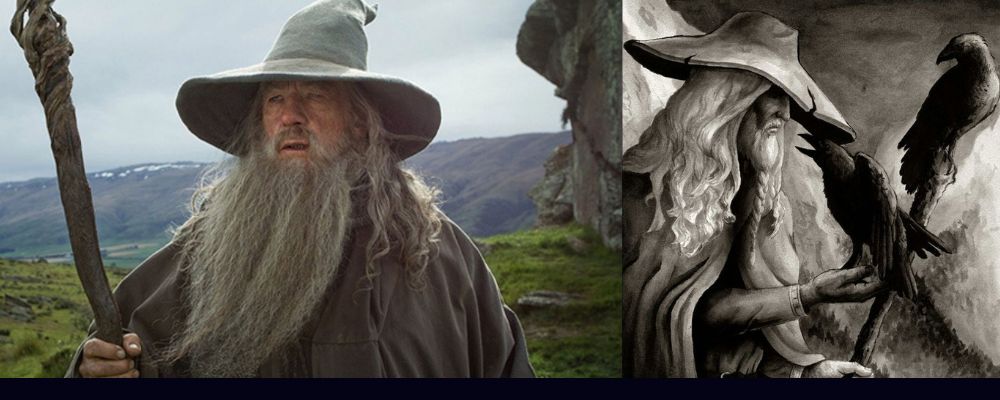
Andvaranaut: The Cursed Ring
Tolkien’s One Ring is almost certainly based on Andvaranaut, the ring that also inspired the ring in Wagner’s Der Ring des Nibelungen, which Tolkien disliked, considering it fascist propaganda.
According to the story, a dwarf named Andvari could shapeshift into a fish. One day he swam to the home of the water nymphs to see their fabled treasure. But when the nymphs saw his strange appearance, they laughed at him. Andvari became enraged and stole their treasure for himself.
A master craftsman, Andvari used some of their treasure to make a gold ring for himself, which became known as the Andvaranaut. As well as being incredibly fine, the ring was enchanted to ensure that his treasure hoard always grew. Andvari then spent his days as a fish, protecting his treasure.
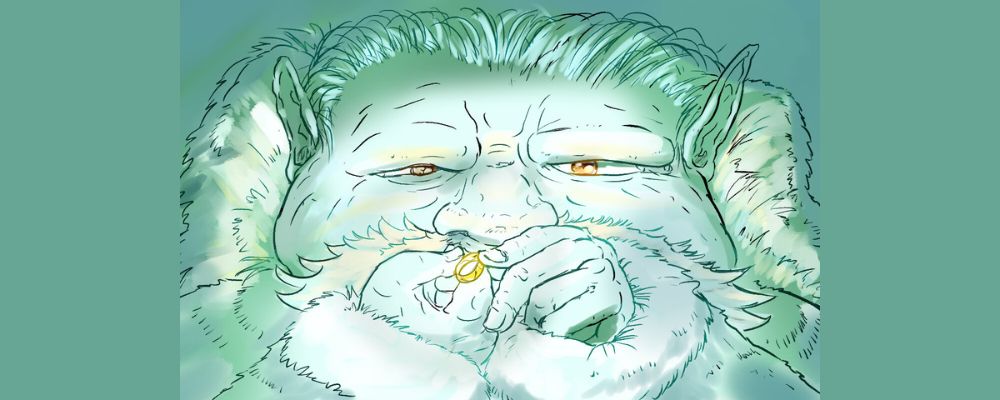
One day Odin, Hoenir, and Loki were on their way to see King Hreidmar of the dwarves. On their journey, they stopped at the river where Andvari lived, and Loki spied his treasure hoard. But there they also encountered an otter with a fine pelt. Loki killed the otter and took his pelt as a gift for the dwarf king.
When the trio arrived at the hall of the dwarf king, he was suddenly angered by this gift as he saw that it belonged to his son Otr, who regularly shapeshifted into an otter. The gods agreed to pay a ransom for the death, as was customary, but the king demanded enough gold to cover the entire pelt and not leave a single hair visible.
Loki remembered Andvari’s hoard and went back for it. He captured Andvari in his fish form and forced him to hand over his gold hoard in exchange for his life. Andvari did this, but begged Loki to let him hold onto his ring. The Trickster refused and prized the ring from the dwarf. In his devastation, Andvari cursed the ring. While it could bring wealth to the owner, it would also bring devastation.
The gods returned to the dwarf king’s hall and covered the otter’s pelt. But Loki held onto the ring, considering it the most precious thing in the hoard. The gods thought that they had covered the whole pelt, but the king noticed that there was still a single whisker visible. Odin demanded that Loki complete the payment and hand over the ring.
The dwarf king accepted the payment, and immediately became obsessed with the fine gold hoard, and especially the ring.
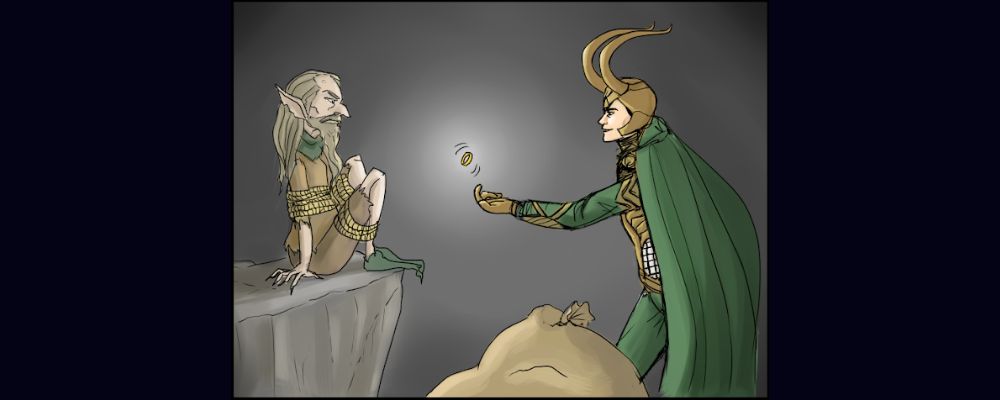
The king’s two other sons, Regin and Fafnir, also became enamored by the hoard and were upset when their father refused to share it with them. In the end, Fafnir killed his father and took the ring for himself. Under its influence he permanently shapeshifted into a dragon and drove everyone else away from his father’s hall so that he could protect his precious hoard.
Regin was also driven away from his father’s hall and set himself up in a local human village.
In this village he met the young hero Sigurd, who brought his father’s broken sword Garm to the smith to be reforged. This may have been one of the inspirations for Narsil, the sword of the kings of Gondor that the Elves reforge into Anduril for Aragorn in LOTR.
Regin convinces Sigurd to kill Fafnir for him and bring him the ring. He also asks Sigurd to bring him Fafnir’s heart, which he intends to eat as it has magical properties. But Sigurd accidentally ingests some of the blood from Fafnir’s heart which allows him to understand the voices of birds, and they shared with him the information that Regin was planning on killing him.
Sigurd kills Regin and keeps the ring from himself. But his life is also cut short, no doubt affected by the continuing curse of Andvari’s ring.

Tolkien’s One Ring
Tolkien’s One Ring is much more complicated than the Andvaranaut, but it was clearly one of the inspirations for his ring of power.
Another may have been Odin’s ring Draupnir. This was the finest golden ring in existence, crafted by the dwarves. It was also magical, and every nine days it would produce another eight rings equally as fine, therefore ensuring Odin’s continued wealth (like Andvaranaut).
One of the kennings (complex alternative names) for gold is “Draupnir’s precious sweat”, perhaps inspiring Tolkien’s decision to have Gollum refer to the ring as his “precious”.
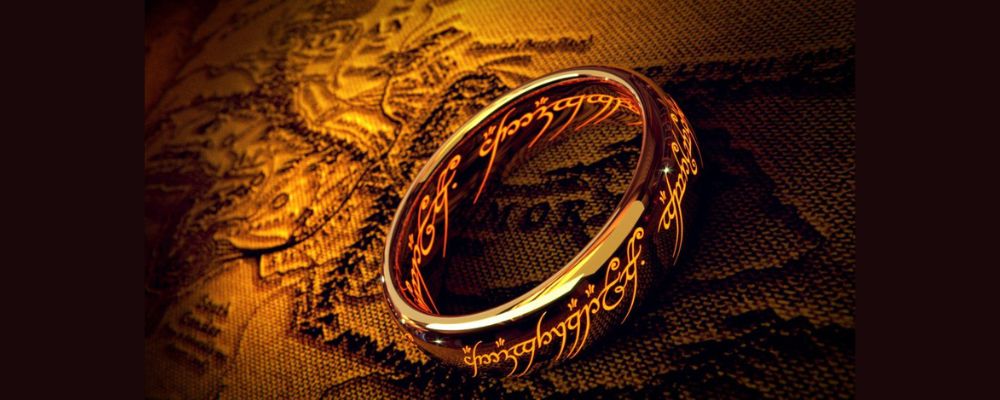
The Verdict
Tolkien’s One Ring is clearly more powerful than any of the rings that we meet in Norse mythology, and his fantasy world is complex and draws inspiration from various cultures and experiences as well as Tolkien’s own imagination. LOTR is much greater than a retelling of Norse mythology, but Vikings fans still have a reason to be excited about The Lord of the Rings: The Rings of Power.
Check out the rings in the VKNG collection.
